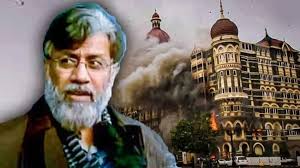NIA files first chargesheet against 26/11 attacks mastermind Tahawwur Rana

India has made a major breakthrough in its pursuit of justice for the 26/11 Mumbai terror attacks. The National Investigation Agency (NIA) filed its first supplementary chargesheet against Tahawwur Hussain Rana on July 9, 2025, in a Delhi court. This marks a key milestone in India’s long fight to expose the international network behind the attack.
Who is Tahawwur Rana?
Rana is a Canadian citizen of Pakistani origin. He once served as a doctor in the Pakistan Army. Later, he moved to North America and opened an immigration consultancy business. According to Indian investigators, this business was a front to support terrorism.
In 2009, U.S. authorities arrested him for helping David Headley plan attacks. He was convicted in 2013 for supporting a terror plot in Denmark but was not charged for the Mumbai attacks. India pursued his extradition for over a decade. After long legal proceedings, the U.S. Supreme Court approved the request, and Rana was brought to India in April 2025.
What the Chargesheet Reveals
The 93-page supplementary chargesheet includes new evidence gathered after Rana’s extradition. It states:
- Rana worked closely with David Coleman Headley, a Pakistani-American LeT operative.
- He helped Headley obtain a visa by fabricating documents through his company.
- Headley conducted surveillance in Mumbai, Delhi, and Kochi to identify targets.
- Rana knew about the Lashkar-e-Taiba and ISI’s role in planning the attacks.
The chargesheet includes witness statements, digital evidence, documents seized during investigation, and material from U.S. authorities.
Court Action and Custody
Following the filing, a Delhi court extended Rana’s judicial custody until August 13, 2025. The NIA also submitted documentation related to his arrest and extradition.
Rana requested permission to call his family. The court will hear that plea on July 15. If the court frames charges in August, a trial could begin soon after.
Why This Matters for India
The 2008 Mumbai attacks remain one of the worst terror attacks in India. Ten gunmen from Pakistan entered the city by sea, launching coordinated attacks across multiple locations. Over four days, they killed 166 people and injured hundreds more.
India has executed one attacker, Ajmal Kasab, but many key planners remain at large. Prosecuting Rana is seen as a critical step to bring international co-conspirators to justice.
International Support and U.S. Role
Rana’s extradition from the United States highlights strong India-U.S. counterterrorism ties. The NIA worked closely with U.S. authorities to collect evidence and ensure compliance with legal procedures.
The chargesheet relies partly on testimony by David Headley, who admitted his role in scouting targets. His confession was crucial in connecting Rana to the broader Lashkar-e-Taiba operation.
What Comes Next?
The court is expected to examine the chargesheet in detail on August 13. If satisfied with the evidence, it will frame formal charges and proceed to trial. Legal experts believe the case could set a precedent for future extraditions of cross-border terror suspects.
Meanwhile, the NIA may submit additional evidence as the investigation continues. Officials have not ruled out more arrests.
A Step Closer to Justice
For the families of 26/11 victims, this development offers hope. India’s long effort to hold every planner and supporter of the attacks accountable is now gaining momentum.
As court proceedings move forward, the case against Tahawwur Rana will likely draw national and international attention.






